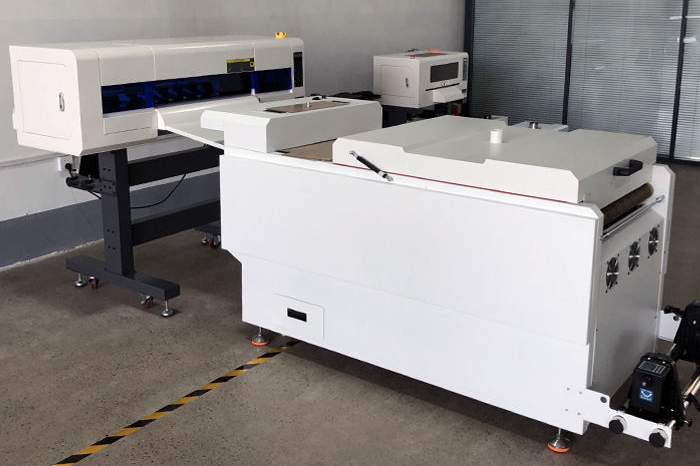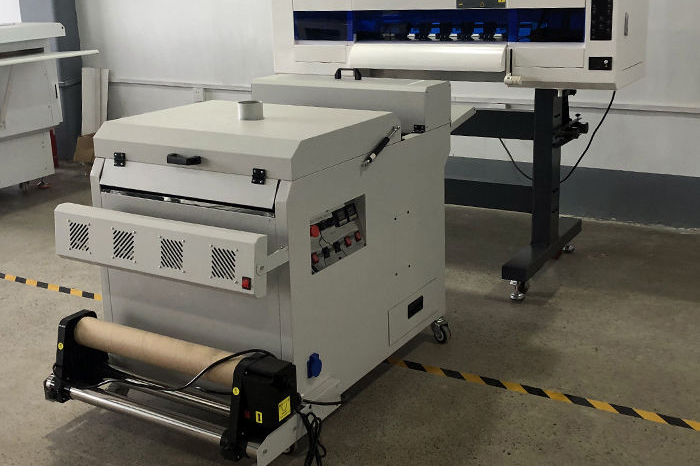DTF powder shaker machines are innovative tools used in the direct-to-garment printing process. They play a crucial role in transferring adhesive powder onto the printed design, enabling the application of vibrant and detailed prints on fabric. Here is an overview of the functionality and benefits of DTF powder shaker machines:

Functionality:
1. Adhesive Powder Distribution: DTF powder shaker machines are designed to evenly distribute a layer of adhesive powder onto the printed design. The machine uses vibration or shaking mechanisms to ensure consistent coverage and adherence of the powder to the printed ink.
2. Activation of Adhesive: The adhesive powder applied by the shaker machine is necessary to create a bond between the printed ink and the fabric. After the powder is applied, it is activated using a heat press, which melts the adhesive and binds it to the fabric.
Benefits:
1. Enhanced Print Quality: DTF powder shaker machines help improve the print quality of direct-to-garment prints. The adhesive powder aids in capturing fine details and vibrant colors, resulting in sharper and more vibrant prints on fabric. It also helps prevent bleeding or smudging of the ink during the transfer process.
2. Versatility in Fabric Selection: DTF powder shaker machines allow for printing on a wide range of fabric types, including cotton, polyester, blends, and even dark fabrics. The adhesive powder helps the ink adhere to different types of fabric surfaces, expanding the possibilities for garment customization and design.
3. Soft and Flexible Prints: DTF printing, facilitated by powder shaker machines, provides soft and flexible prints on fabric. The adhesive powder, when activated, creates a thin and flexible layer that does not compromise the fabric's texture or comfort.
4. Cost-Effective Solution: DTF powder shaker machines offer a cost-effective solution for small and medium-sized businesses looking to enter the garment customization market. These machines have relatively low upfront costs compared to other printing technologies, making them a suitable option for entrepreneurs or businesses with budget constraints.
5. Easy Operation and Maintenance: DTF powder shaker machines are designed for user-friendly operation, with simple controls and intuitive interfaces. They require minimal training to operate effectively. Additionally, regular maintenance is straightforward, involving routine cleaning and ensuring proper functioning of the shaking mechanism.
6. Scalability and Efficiency: DTF powder shaker machines are scalable, allowing businesses to increase production capacity as demand grows. The machines can handle multiple prints simultaneously, making them efficient for bulk printing orders. This scalability and efficiency contribute to faster turnaround times and increased productivity.
It's important to note that while DTF powder shaker machines offer numerous benefits, they are just one part of the DTF printing process. Other equipment, such as DTF printers, heat presses, and transfer papers, are also essential components in achieving high-quality DTF prints.
Before investing in a DTF powder shaker machine, consider factors such as the size and weight capacity of the machine, the quality and consistency of powder distribution, and compatibility with your existing DTF printing setup. Research different models, review customer feedback, and consult with industry experts to determine the best machine for your specific business needs.
kenteer has launched DTF powder shaker machines for customers . If you have any needs, you can contact us for a quote.

